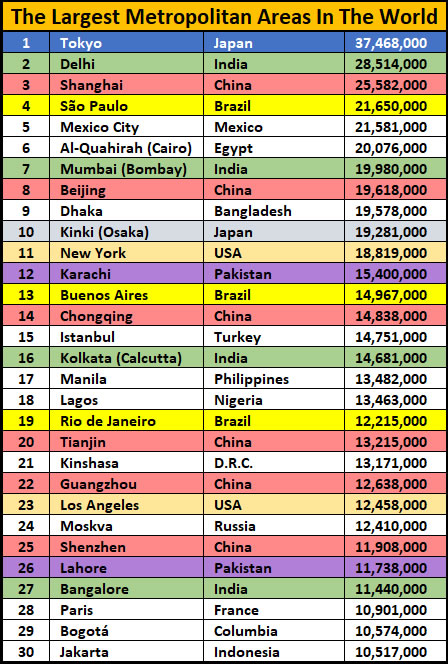|
|||
CORE CITIES: A core city (中核市, Chūkakushi) is a class or category of Japanese cities. It is a local administrative division created by the national government. Core cities are delegated many functions normally carried out by prefectural governments, but not as many as designated cities. To become a candidate for core city status, a city must have a population greater than 300,000 and an area greater than 100 square kilometers, although special exceptions may be made by order of the cabinet for cities with populations under 300,000 but over 200,000. After the abolition of special city status on April 1, 2015, any city with a population above 200,000 may apply for core city status. Application for designation is made by a city with the approval of both the city and prefectural assemblies. LIST OF CORE CITIES
DESIGNATED CITIES: A city designated by government ordinance (政令指定都市, seirei shitei toshi), also known as a designated city (指定都市, shitei toshi) or government ordinance city (政令市, seirei shi), is a Japanese city that has a population greater than 500,000 and has been designated as such by order of the Cabinet of Japan under Article 252, Section 19 of the Local Autonomy Law. |
SPECIAL CITIES: A special city (特例市, Tokureishi) of Japan is a city with a population of at least 200,000, and is delegated functions normally carried out by prefectural governments. Those functions are a subset of the ones delegated to a core city. This category was established by the Local Autonomy Law, article 252 clause 26. They are designated by the Cabinet after a request by the city council and the prefectural assembly. Because the level of autonomy delegated to special cities is similar to that for core cities, after consultation with local governments the category of special cities was abolished in the revision of the Local Autonomy Act enacted on April 1, 2015, and cities with a population of at least 200,000 may now apply to be directly promoted to core city status. Special cities which have not been promoted may still retain autonomy, and are called special cities for the enforcement period (施行時特例市, Shikōji Tokurei shi). As a special case, within five years of the abolishment of the category of special cities, i.e. before April 1, 2020, special cities with a population under 200,000 may also apply to be promoted to core city status. The special cities are not the same as the special wards of Tokyo. They are also different from special cities (特別市, tokubetsu-shi) that were legally established in the Local Autonomy Law between 1947 and 1956, but never implemented. They would have been prefecture-independent cities (in an analogous way, special wards are city-independent wards). They were the legal successors to the 1922 "six major cities" (roku daitoshi; only five were left in 1947 as Tokyo City had been abolished in the war) and precursors to the 1956 designated major cities which have expanded autonomy, but not full independence from prefectures. |
||



























































